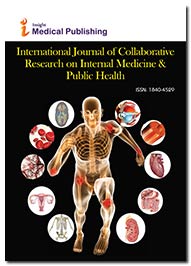Abstract
ÃÆâÃâââ¬ÃâÃÅMenstrual characteristicsÃÆâÃâââ¬Ãââ⢠and ÃÆâÃâââ¬ÃâÃÅPrevalence and Eff ect of DysmenorrheaÃÆâÃâââ¬Ãââ⢠on Quality of Life of medical student s
Background: A common gynecological problem encountered among female medical students is dysmenorrhea, which also appears to be a leading cause of absenteeism from college. Hence arises a need to evaluate the menstrual characteristics, prevalence of dysmenorrhoea and its effect on daily routine activities and quality of life of medical students. Aims: This is a cross sectional descriptive study, conducted on 560 female medical students with the objectives to evaluate the menstrual characteristics ,prevalence and severity of dysmenorrhoea and its effects on the quality of life, particularly absenteeism from college. Methods: Three medical colleges in Mangalore (Karnataka, India) provided the setting of our study. These were representative of a cosmopolitan nature of the study population. A total of 560 students were interviewed by the investigators. All participants were given a preformed questionnaire to complete. Besides menstrual characteristics the questionnaire included gradation of pain and quality of life based on the American Chronic Pain Association (ACPA) which was modified according to needs of our study. Chi-square test and logistic regression were used for statistical analyses. Results: The average age of the participants was 20.57 years +/- 1.208 years (ranging from 17-24 years). The mean BMI of the participants was 21.69 +/-3.27 kg/m2 (ranging from 14.7 kg/m2 to 33.54kg/m2 ). The average age of menarche was 12.67+/-1.10years, (9 to 16 years). The average menstrual cycle duration of the participants in the study group was 29.52+/- 3.37days. 97.2 %( 533), family history of dysmenorrhea was present in 40% participants (n=560). Of the total , 86.96 % (487) participants reported to have physical premenstrual symptoms and 55.71% (312) reported to have psychological premenstrual symptom. There is a significant association between Quality of Life and severity of dysmenorrhea . Conclusion: Our study shows a significant association of dysmenorrhoea with the age of menarche, family history and both physical and psychological premenstrual symptoms. Although there was an association of dysmenorrhoea with chronological age, BMI and cycle length, these associations were not found to be statistically significant. The most significant conclusion of our study was found to be high prevalence of dysmenorrhoea, having a significant effect on the routine activities and a detrimental effect on the quality of life. The alarming prevalence of self-medication in the form of NSAID's, easily available over the counter was also highlighted in our study.
Author(s):
Shrotriya Charu, Ray Amita, Ray Sujoy, George Aneesh Thomas
Abstract | Full-Text | PDF
Share this

Abstracted/Indexed in
- Google Scholar
- Genamics JournalSeek
- CiteFactor
- Directory of Research Journal Indexing (DRJI)
- WorldCat
- Proquest Summons
- Secret Search Engine Labs
Open Access Journals
- Aquaculture & Veterinary Science
- Chemistry & Chemical Sciences
- Clinical Sciences
- Engineering
- General Science
- Genetics & Molecular Biology
- Health Care & Nursing
- Immunology & Microbiology
- Materials Science
- Mathematics & Physics
- Medical Sciences
- Neurology & Psychiatry
- Oncology & Cancer Science
- Pharmaceutical Sciences

